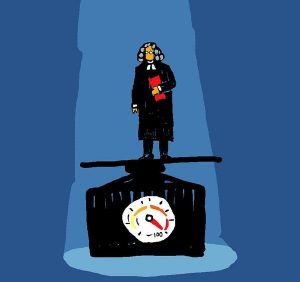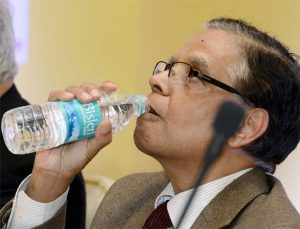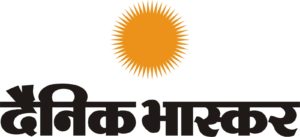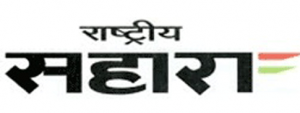
29-10-2016 (Important News Clippings)
To Download Click Here
Strategic sales of PSUs most welcome but sell land separately
It is welcome that, halfway into its term of office, the Modi government has been able to garner the political resolve to offload 100% of the Centre’s stake — by way of outright sale — in seven perennially loss-making central public sector units. The privatisation would redeploy valuable resources for more productive purposes and rid the exchequer of long recurring losses, which would be for the greater good. The way forward is to hive off the land assets of the PSUs concerned as separate entities prior to privatisation, so that no unearned rents accrue to the new owners. There needs to be clear-cut legal provision on this score, so that there are no claims later.
It is scandalous that the government has been pussyfooting on divesting and exiting, for example, Scooters India, for over two decades now. Hopefully, the bankruptcy code should soon be operational and would be able to redeploy stressed assets quickly, efficiently and with the minimum of fuss. It is also notable that several cement and steel units in the public sector have also been identified for outright sale to strategic investors. Such a divestment plan, with full control of plant and machinery very much on offer, would invite bids for takeover at a premium; there can be no strategic case for the Centre to stay invested in sundry cement and steel units.
The Niti Aayog needs to firm-up policy on earmarking new and emerging strategic areas for the public sector, the sectors in which the private sector remains unwilling or unable to invest. In the old days, steel, rightly, was deemed as a strategic sector. It is another matter that the attendant inward orientation and absurd tariffs of up to 200% led to a high-cost economy that stultified growth, for years. But, going forward, while we stay clear of autarky and bet on openness to modernise and step-up innovation, it makes sense to identify strategic sectors like, say, next-generation telecom networks or a new breed of materials derived from nanotechnology, to augment India’s economic capability. If the public sector works in space, it can, in other sectors, too.
केंद्र सरकार की अदालत में सुप्रीम कोर्ट की सुनवाई नहीं
अब डिजिटल डिपाजिट में रख सकेंगे प्रमाणपत्र और पुरस्कार
शेयर डिपाजिटरी की तर्ज पर अगले तीन महीने में एक राष्ट्रीय शैक्षणिक डिपाजिटरी (एनएडी) कायम की जाएगी। इस डिपाजिटरी में उच्च शिक्षा संस्थानों की ओर से दिए जाने वाले शिक्षा प्रमाणपत्र, डिग्रियों और अन्य शैक्षणिक पुरस्कारों को डिजिटल आधार पर संग्रहित किया जाएगा। केंद्रीय मंत्रिमंडल ने गुरुवार को निर्णय किया कि डिपाजिटरी को अगले तीन माह के बाद स्थापित और परिचालित किया जाएगा और 2017-18 तक इसे पूरे देश में प्रभावी कर दिया जाएगा। कैबिनेट बैठक के बाद जारी एक बयान में यहां कहा गया कि वित्त मंत्री के बजट भाषण में शेयर डिपाजिटरी की तर्ज पर उच्च शिक्षा संस्थानों की ओर से दिए जाने वाले शिक्षा प्रमाणपत्र, डिग्रियों और अन्य शैक्षणिक पुरस्कारों को डिजिटल आधार पर संग्रहीत करने के लिए डिजिटल डिपाजिटरी स्थापित करने की घोषणा की गई थी। बयान में कहा गया, इस निर्णय का उद्देश्य डिजिटल भारत के स्वप्न को एक अन्य आयाम तक पहुंचाना और बढ़ावा देना है।
एनएडी को एनएसडीएल डाटाबेस मैनेजमेंट लिमिटेड (एनडीएमएल) और सीडीएसएल वेंचर्स लिमिटेड (सीवीएल) परिचालित करेगी। ये दोनों भारतीय प्रतिभूति एक्सचेंज बोर्ड (सेबी) में पंजीकृत डिपाजिटरी की पूरी तरह स्वामित्व वाली सहायक कंपनियां हैं। इसमें डिजिटल आधार पर संग्रहित डाटा की प्रामाणिकता के लिए वह शैक्षिणक संस्थान जिम्मेदार होगा जो इसे प्रणाली में अपलोड करेगा। डिपाजिटरीज एनएडी में संग्रहित होने वाले आंकड़ों की सुरक्षा सुनिश्चित करेंगे। एनएडी शिक्षण संस्थानों, बोर्डों, योग्यता आकलन निकायों, छात्रों और अन्य उपयोगकर्ताओं को पंजीकृत करेंगे। इसमें बैंकों, नियोक्ता कंपनियों, सरकारी एजंसियों और शैक्षणिक संस्थानों जैसे पुष्टि करने वाले निकाय भी होंगे।
Date: 28-10-16
उत्तर सिर्फ समाज के पास
हिंदू हिंदुत्व, हिंदूइज्म आदि शब्दों पर भारत में विवाद चलता ही रहेगा, जब तक कि समाज में भारतीय, भारतीयता जैसी धारणाओं के अर्थ और आशय पर व्यापक सहमति नहीं होती। यह सहमति लाना किसी अदालत का काम नहीं है और न ही इसे कोई राजनैतिक दल इसे समाज पर थोप सकता है। यह हमारे समाज के हजारों साल के अनुभव से बने स्वभाव की सहज प्रक्रिया से ही विकसित हो सकता है। जब कोई नेता या अपने आपको धर्मनिरपेक्ष कहने वाला सामाजिक कार्यकर्ता इन शब्दों पर आपत्ति करता है तो राजनैतिक दल तो अपने हित-अहित का ध्यान रखते हुए या तो बगलें झांकने लग जाते हैं या गोलमोल उत्तर देकर मामला टाल देते हैं। लेकिन न्यायालय क्या करे? उसे तो कानून के दायरे में रह कर ही फैसला सुनाना है, वह नफा-नुकसान के हिसाब से उत्तर तो नहीं दे सकता। उसके लिए देश का संविधान ही महाग्रंथ है, जिसका वह सहारा ले सकता है। यही 1995 में सर्वोच्च न्यायालय की तीन सदस्यीय पीठ ने किया और उसीका अनुमोदन सात सदस्यीय पीठ ने अब कर दिया। 1995 में सर्वोच्च न्यायालय के सामने सवाल था कि क्या उन उम्मीदवारों के चुनाव भ्रष्ट आचरण के अपराध पर रद्द किया जाना चाहिए, जिन पर हिंदुत्व के नाम पर वोट लेने का आरोप है। काफी बहस के बाद अदालत इस नतीजे पर पहुंची कि हिंदुत्व कोई मजहब नहीं है, वह एक जीवन शैली है। मतलब यह था कि हिंदुत्व किसी मजहब की तरह या किसी मत-मतांतर की भांति कुछ निश्चित रस्मो-रिवाज या नियम-कायदों की आचरण व्यवस्था नहीं है। भारत में उपजे अनेक मत और मार्ग इससे निकले हैं। लेकिन आपस में रस्मो-रिवाज और कभी-कभी दार्शनिक विचारों में भी भिन्न है। कुछ तो इस एक-दूसरे के विपरीत भी हैं। अद्वैतवादी, द्वैतवादी, शैव, वेदांती , सनातनी या आर्यसमाजी सभी अपने आप को हिंदू ही कहते हैं। इसलिए हिंदुत्व न तो किसी एक दार्शनिक विचारधारा और न किसी एक पूजा-पद्धति का नाम है। अदालत को लगा कि हिंदुत्व का नाम लेने से ही किसी के आचरण को भ्रष्ट नहीं माना जा सकता है। लेकिन इसका मतलब यह नहीं है कि अदालत ने चुनाव में मजहब के आधार पर प्रचार करने की छूट दी हो। मुख्य न्यायाधीश टीएस ठाकुर ने कहा ‘‘सही बात यही होगी कि एक धर्मनिरपेक्ष देश में मतों के लिए अपील देश के धर्मनिरपेक्ष सिद्धांतों के आधार पर ही की जाए। हम धर्म के आधार पर वोट मांगने की प्रवृत्ति को प्रोत्साहित नहीं कर सकते। वोट बटोरने के उद्देश्य से राजनैतिक संगठनों द्वारा किसी धर्म विशेष का प्रचार करने की प्रवृत्ति को मान्यता नहीं दी जा सकती है।’ लेकिन अगर अदालत ने इस बात पर विचार करने की आवश्यकता महसूस नहीं की कि हिंदुत्व की र्चचा करने को धार्मिक प्रचार माना जाए कि नहीं, तो यही अर्थ निकलेगा कि अदालत को आज भी न्यायमूर्ति वर्मा की खंड पीठ के आदेश में कोई बुराई नहीं दिखाई देती। इसलिए अदालत की सोच को समझने के लिए हमें उसी पीठ के फैसले पर ध्यान देना होगा। न्यायमूर्ति वर्मा के अनुसार ‘‘हो सकता है कि इन शब्दों को इस्तेमाल करने का आशय धर्मनिरपेक्षता को बढ़ावा देना और भारतीय समाज की जीवनशैली, संस्कृति-नैतिक मूल्यों पर जोर देना ही हो, और किसी दल की असहिष्णुता और भेदभावपूर्ण नीतियों की आलोचना करना ही हो।’ हिंदुत्व के पक्ष में इतना कहने के बाद अदालत ने चेतावनी दी कि अगर इन शब्दों को जानबूझ कर गैर हिंदुओं को निशाना बनाकर धर्म या मजहब के तौर पर ही इस्तेमाल किया जा रहा हो तो इसे कदापि स्वीकार नहीं किया जा सकता है। लेकिन सवाल यह उठता है कि तीस्ता सीतलवाड़ और अन्य प्रतिवादियों की असली शिकायत क्या है? उनका कहना है कि न्यायमूर्ति वर्मा के फैसले ने ‘‘विनाशकरी स्थितियां’ पैदा कर दीं हैं; क्योंकि अब तो हिंदुत्व को भारतीयता के समान माना जाने लगा है और इसे भारतीय नागरिकता की पहचान बताया जाने लगा है। दरअसल, प्रतिवादियों की परेशानी वास्तविक है। पिछले दशक में हिंदुत्व पर इतना बोला-सुना गया कि स्वाभाविक रूप से इसकी विशद व्याख्याएं होने लगीं और धीरे-धीरे यह धारणा बनने लगी है कि हिंदुत्व दरअसल भारत में जन्मे धर्मो के बीच सेतु है या उनको जोड़ने वाला धागा। अगर धर्म को मजहब के समतुल्य माने तो इस्लाम और ईसाइयत के भारत में आने से पहले भी भारत बहुधर्मी देश रहा है। हिंदू नाम भी इन सब धर्मो को एक पहचान देने के उद्देश्य से मिला। अगर आरम्भ से ही हिंदुत्व इनके बीच की सामान्य धुरी रही है तो उसे किसी एक धर्म के बराबर कैसे माना जा सकता है? कई सालों से यह एहसास बढ़ता रहा है और इससे न केवल मत-मतांतारों बीच निकटता आने लगी है अपितु सिख, बौद्ध और जैन धर्मो के मुकबले भी हिंदुत्व कोई टकराव की स्थिति नहीं रहा है। यह हालत सचमुच उन दलों के लिए अनुकूल नहीं जो छोटे-बड़े साम्प्रदायिक गुटों की राजनीति करते हैं और जिनके लिए कोई सार्वदेशिक पहचान भले ही वह संस्कृति ही क्यों न हो; अनुकूल वातावरण नहीं बनाती है। भाजपा जैसे दलों के लिए प्रत्यक्ष इसका कोई प्रभाव न भी पड़े, क्योंकि यह दल भी अपने राजनैतिक हितों के लिए अल्पसंख्यकों को मनाने में लगा है। लेकिन इससे धर्मनिरपेक्षता के बदले सर्वधर्म समभाव की धारणा को बढ़ावा देना अधिक आसान हो जाता है। धर्मनिरपेक्षता जहां धर्म से हटने का भाव है तो समभाव में धर्म को साथ लेकर चलने की भावना है। स्वाभाविक है कि इसका राजनैतिक प्रभाव दूरगामी होगा क्योंकि वर्तमान स्थितियों में भाजपा ही नहीं, कोई भी दल जो सार्वजनिक राजनीति करता है, इस अदालती फैसले से टकराने की कोशिश नहीं करेंगे। इसलिए जो लोग इस स्थिति से असंतुष्ट हैं, उन्हें भी समझ लेना चाहिए कि विचारों और धारणाओं की जंग अदालतों में नहीं लड़ी जा सकती है। उन्हें विचारों के क्षेत्र या फिर राजनीतिक के मैदान में ही लड़ा जा सकता है।
जवाहरलाल कौल
Date: 28-10-16
कारोबारी सुगमता रैंकिंग
सरकार ने स्पष्ट किया है कि ‘‘ईज ऑफ डूइंग बिजनेस’ यानी ‘‘कारोबार सुगमता रिपोर्ट’ के मामले में वह विश्व बैंक की ताजा रैंकिंग से सहमत नहीं है। विश्व बैंक ने कारोबार सुगमता की दृष्टि से 190 देशों की सूची में भारत को 130 वां स्थान दिया गया है, जो हर दृष्टि से निराशाजनक है। यानी पिछले वर्ष से केवल एक स्थान का सुधार। विश्व बैंक ने इसके लिए जो भी आधार बनाए हों, पर सरकार की इससे असहमति प्रकट करना स्वाभाविक है। वास्तव में प्रधानमंत्री नरेन्द्र मोदी ने स्वयं कारोबार सुगमता के मामले में देश को कम-से-कम शीर्ष के 50 देशों में शामिल करने का लक्ष्य निर्धारित कर केंद्र एवं राज्यों से उस पर मिलकर काम करने का आह्वान किया था। सरकार का कहना भी सही लगता है कि नई रैंकिंग तैयार करते वक्त केंद्र और राज्य सरकारों की तरफ से किए गए इन सुधारों और कदमों पर पूरी तरह विचार नहीं किया गया। केंद्रीय वाणिज्य व उद्योग मंत्री निर्मला सीतारमण का कहना है कि न केवल केंद्र सरकार, बल्कि देश के तकरीबन सभी राज्य कारोबार करना आसान बनाने की दिशा में काफी अधिक सक्रिय रहे हैं। जाहिर है अगर ये सुधार हुए हैं, जिनमें से कुछ दिखता है तो इन सुधारों की झलक ताजा रैंकिंग में दिखाई नहीं दे रही है। यह बात सही है कि करीब 12 सुधार ऐसे हैं, जो इस प्रक्रिया का हिस्सा ही नहीं बन पाए। इनमें जीएसटी, बैंक्रप्सी कोड, वाणिज्यिक न्यायालय, ऑनलाइन ईएसआइसी और ईपीएफओ पंजीकरण आदि ऐसे कदम हैं, जो विश्व बैंक रिपोर्ट को तैयार करते वक्त प्रक्रिया में शामिल नहीं हो पाए। हालांकि प्रधानमंत्री ने विश्व बैंक की रिपोर्ट पर केंद्र और राज्य सरकारों को कारोबार सुगमता के मामले में सुधार की आवश्यकता वाले क्षेत्रों की फिर से समीक्षा के निर्देश दिए हैं। यानी असली वजह की रिपोर्ट बनाकर उस पर काम किया जाए। इससे साफ है कि सरकार केवल विश्व बैंक रिपोर्ट का विरोध करने तक ही सीमित नहीं है, वह उस दिशा में भी काम कर रही है, जिससे भारत की रैंकिंग सुधरे। यह सही तरीका है। संकल्प हो तो कुछ भी कठिन नहीं है। एक ओर विरोध और उसके माध्यम से उन बिंदुओं को उजागर करना, जिनको रैंकिंग में शामिल नहीं किया और दूसरी ओर तेजी से वैसे सुधार करना ताकि अगली बार की गणना में वे सब शामिल हों और भारत को बेहतर स्थान मिले। किंतु इसके लिए राजनीतिक दलों एवं राज्य सरकारों को भी पूरा सहयोग करना होगा।
Date: 28-10-16
छोटे शहरों की बड़ी भूमिका
एसोचेम के एक सर्वेक्षण के मुताबिक 2016 के इस त्योहारी सीजन ने करीब 25000 करोड़ रु पये की ऑनलाइन सेल होने की संभावना है। यह दिख भी रहा है। हरेक दूसरे दिन कोई ना कोई ऑनलाइन शापिंग वेबसाइट किसी-का-ना-किसी सेल का ऐलान कर रही होती है। तमाम अखबारों के पहले पेज के इश्तिहार भी अर्थव्यवस्था का रु ख बताते हैं। किसी जमाने में तमाम बिल्डरों के इश्तिहार अखबारों के पहले पेज पर हुआ करते थे। अब इनकी जगह ऑनलाइन सेल की ऑनलाइन शापिंग वेबसाइटों के इश्तिहारों ने ले ली है। गौर करने की बात यह है कि सिर्फ बड़े मेट्रो शहर ही ऑनलाइन सेल में भागीदारी नहीं कर रहे हैं, बल्कि वे छोटे शहर भी ऑनलाइन सेल में भागीदारी कर रहे हैं, जिन्हें आम तौर पर टियर टू, टियर री शहर माना जाता है। एक और शोध के मुताबिक छोटे शहरों से ऑनलाइन सेल की गूगल इनक्वायरी में ही हाल की अवधि में 250 प्रतिशत इजाफा हुआ है। सिर्फ दिल्ली और मुंबई ही फ्लिपकार्ट, अमेजन से नहीं खरीद रही है, बल्कि उन्नाव और मथुरा के दरवाजों पर भी फ्लिपकार्ट, अमेजन और स्नैपडील के पैकेट दस्तक दे रहे हैं। आज के समय में जरूरत के सामान से लेकर बड़े-बड़े नामों तक सब कुछ ऑनलाइन उपलब्ध है। पिछले एक साल में ऑनलाइन शॉपिंग में काफी कुछ बदलाव देखने को मिले हैं। एक समय था जब ऑनलाइन सबसे ज्यादा बिकने वाले सामानों में मुख्य रूप से इलेक्ट्रॉनिक उपकरण और कपड़े हुआ करते थे। लेकिन कम्पटीशन के इस दौर में अब ऑनलाइन शॉपिंग वेबसाइट हींग और चूरन भी बेच रही हैं। अमेजन की साइट पर हींग और चूरन भी बिक रहे हैं। इसे लेकर अमेजन की प्रतिद्वंद्वी कंपनियों ने उसका मजाक भी उड़ाया है पर अमेजन मार्केटिंग को गहराई से समझती है। जो कस्टमर एक बार हींग या चूरन खरीद करके संतुष्ट हो जाएगा, वह देर-सबेर महंगा मोबाइल या पावर बैंक खरीदने भी अमेजन पर आएगा। बाजार के नियम बहुत कुछ बदल गए हैं। अब मूल बात यह है कि किसी भी तरह कस्टमर को पकड़ो और उसे संतुष्ट करो, जुड़ाव रखो। ऐसा देखा जा रहा है कि कई कंपनियों ने पहले कुछ और बेचना शुरू किया था, फिर वह किसी और धंधे में अपने पुराने ग्राहकों को ले गई। पेटीएम इलेक्ट्रानिक पर्स के तौर पर काम करती रही है, पर अब इसका छोटा-सा बैंक भी काम करेगा। ऑनलाइन शापिंग वेबसाइटों के लिए चूरन तो बड़ा सहारा बनने ही वाले हैं, साथ में छोटे शहरों का बड़ा सहारा लगने वाला है। इसकी कुछ बुनियादी वजहें हैं। सबसे बड़ी वजह तो यह है कि बड़े शहरों में तमाम ब्रांडों की उपलब्धता और छोटे शहरों में तमाम ब्रांडों की उपलब्धता की स्थितियों में बहुत फर्क है। जैसे कनॉट प्लेस दिल्ली में एक सड़क पर विश्व की टॉप घड़ियों के शोरूम एक जगह उपलब्ध हैं। नेहरू प्लेस दिल्ली या लक्ष्मी नगर दिल्ली में मोबाइल फोन का कोई भी ब्रांड बड़ा या छोटा आसानी से उपलब्ध है। ऑनलाइन मोबाइल बाजार ने ऑनलाइन शापिंग की स्थितियों को बहुत बदल दिया है। मोबाइल के कई चीनी ब्रांड सिर्फ ऑनलाइन सेल चलाते हैं, ये मोबाइल सस्ते होते हैं, बहुत फीचर देते हैं। उन्नाव और मथुरावालों को भी ये आकर्षित करते हैं। इंटरनेट भौगोलिक सीमाओं को खत्म कर देता है। जैसे लक्ष्मी नगर दिल्ली के शोरूम से खरीदने वाले ग्राहक वे ही होंगे, जो वहां भौतिक तौर पर आएंगे। ये लक्ष्मी नगर के आसपास के इलाकों के हो सकते हैं, छोटा-सा हिस्सा दिल्ली से बाहर से भी आया हुआ हो सकता है पर अधिकांश दिल्ली के ही होंगे। अंडमान का ग्राहक भी उतनी आसानी से कोई आइटम ऑनलाइन खरीद सकता है, जितनी आसानी से कोई दिल्ली वाला खरीद सकता है। तो ब्रांडों की उपलब्धता इंटरनेट के जरिये अब एक साथ कई जगह एक ही वक्त हो जाती है। ऐसा भेदभाव इंटरनेट ने खत्म कर दिया है। पर यहां कुछ बातें समझने की हैं। छोटे शहरों में ऑनलाइन शापिंग करनेवालों को यह भी देख लेना चाहिए कि वे जो चीजें खरीद रहे हैं, उनके सर्विस सेंटर उनके शहरों में हैं या नहीं। छोटे शहरों के ग्राहकों को ऑनलाइन शापिंग करते वक्त यह देख लेना चाहिए कि उनके खरीदे गए आइटमों के सर्विस सेंटर आसपास हैं या नहीं। वहीं, ऑनलाइन शापिंग के जरिये माल बेचनेवाली कंपनियों को भी तय करना चाहिए कि उनका कस्टमर केयर नेटवर्क छोटे शहरों में भी पहुंचे जहां से अब नए ग्राहक आ रहे हैं वरना वेबसाइटों से छोटे शहरों के ग्राहकों का मोहभंग होते देर नहीं लगेगी।
How to judge the judges
In line with global practice, India must revise existing mechanisms and deliberate on the performance evaluation of judges at all levels of the judiciary

While this action of the State government suggests that holding judges to performance standards is gaining momentum, the existing system of performance evaluation for the lower judiciary is plagued with various problems. More worryingly, the higher judiciary in India is not subject to any sort of evaluation.
Assessing judges, India and abroad
Lower court judges in India are evaluated through a system of Annual Confidential Reports (ACRs), which are completed by the senior-most judges of the lower court, and reviewed by the State High Court. But ACRs are neither filled up regularly nor is the evaluation process transparent. Concerns about this lack of due process have even reached the Supreme Court, which early this month summoned the Registrar General of the Delhi High Court to explain why a lower court judge was marked as “integrity doubtful” without material basis.The idea for amending and improving existing methods for evaluating judges’ performance was floated in 2013, when the Law Ministry acknowledged the need for a more scientific method of performance appraisal of judges. The Ministry also admitted that there was a lack of uniformity of judicial performance appraisal across States. But there have been no significant changes since these observations were made.
The Vidhi Centre for Legal Policy recently surveyed the legal community for its views on judicial performance evaluation. Almost all the individuals surveyed said that there should be a system of performance appraisal of judges, particularly of the higher judiciary. Most survey respondents believed that such appraisal would lead to greater accountability, transparency and better and efficient functioning of judges. This is an opportune moment to revise existing mechanisms and deliberate on the performance evaluation of judges at all levels of the judiciary.
Evaluating judges’ performance through periodic reviews and evaluations is a common practice across jurisdictions. Formally known as “Judicial Performance Evaluation” (JPE), the system of periodic assessment of judicial performance originated in the U.S. Sitting judges were evaluated to inform voters about a judge’s performance record for ‘retention elections’. Retention elections allow the public to vote for or against the continuing tenure of judges. JPEs became institutionalised over time, and are now regularly followed across the U.S., with most States incorporating provisions for evaluating judges in their constitutions.In the European Union, the European Commission for the Efficiency of Justice conducts a periodic performance review of court systems of different member states. This country-wise study collects data on various parameters, including the efficiency of courts in justice disposal, the costs per case, and the budget of courts. The outcome of this exercise is the “EU Justice Scoreboard”, published annually, rating the working of justice systems across member states.
Studies of JPE programmes suggest that parameters for evaluating judicial performance may be qualitative as well as quantitative. These include the rate of disposal of cases by a judge, the quality of judgments and legal reasoning, knowledge of the law, behaviour towards lawyers in court proceedings, independence and transparency. JPE programmes initially tend to use objective criteria to evaluate judges, eventually moving towards more qualitative criteria when systems have evolved sufficiently to reduce likelihood of bias and subjectivity in assessment processes.Judges in India are nominated or appointed through examination processes and not elected as in the U.S. Therefore, JPE programmes here would not work the same way as in the U.S., where they were formulated to give voters information on judges before retention elections. However, studies of JPEs show that besides providing information to voters, these programmes also serve the purpose of increased transparency and accountability of the judiciary. A regular review of judicial performance ensures that once appointed, judges are mindful of their accountability to the institution of the judiciary.
A conversation must begin
But even while measuring judicial performance, a delicate balance needs to be struck. Scholars have expressed reservations that performance evaluations could compromise the independence of the judiciary. To avoid this, a JPE programme is best devised by the judiciary itself, instead of by the government. The Madras High Court, for the first time, has come out with qualitative as well as quantitative performance assessment of its judges this year. This exercise was met with mixed reactions from lawyers, some of whom felt that this could unduly pressurise judges to dispose of cases, and encourage indiscriminate disposal rather than delivering justice. Despite the opposition from a section of lawyers, this is precisely the sort of performance evaluation courts should start conversations about.The first step towards such evaluation should be the objectives of such evaluation, such as improving quality of justice, pendency rates, and so on. A joint consultation could be held with stakeholders, including judges, lawyers, academics and members of civil society to understand how best to initiate such a system in India. Any codified system that emerges from these discussions, say, in the form of guidelines or regulations, must be reviewed to ensure minimum bias and maximum transparency. All these steps would help India work towards higher standards and greater accountability in judicial functioning.
Medha Srivastava is a Research Fellow at the Vidhi Centre for Legal Policy, New Delhi.
A Story Of Two Bills
The transgender rights bill dilutes the private member’s bill passed by Rajya Sabha.

The Rights of Transgender Persons Bill, 2014, piloted by Tiruchi Siva, MP, was introduced in the RS on December 10, 2014. MPs across partylines discussed the bill in detail and rallied for its passage. This proved to be a game-changer leading to the RS passing a private member’s bill for the first time in the last 46 years. However, there was an unanticipated delay in discussing the bill in the Lok Sabha. The reason became evident when on December 26, 2015, the Ministry of Social Justice and Empowerment uploaded a bill on transgender “protection” with diluted provisions on its website.
The massively diluted Transgender Persons (Protection of Rights) Bill, 2016 of the government is unrecognisable from the private member’s bill passed by the RS and betrays a lack of understanding of the community and its concerns. If passed it will reverse all the gains the community has achieved in its pursuit of dignity through decades of struggle.To start with, the government’s bill gives a degrading and scientifically incorrect definition of transgender — as part male and part female or an incompletion with the binary gender as the reference point. This is in contravention of the definition of transgender provided by the Supreme Court’s NALSA judgement, the private member’s bill and the Union government’s own expert committee on transgender persons. A transgender is a person whose sense of gender — gender identity — does not match with the gender assigned to that person at birth. Gender identity refers to each person’s deeply felt internal and individual experience of gender, which may or may not correspond with the sex assigned at birth.
Fear of non-conforming behaviour and the resultant hostility displayed by the state and the society has resulted in the transgender community becoming one of the most deprived and disempowered group in the Indian society. This regretful state of affairs was acknowledged by the Supreme Court in its path-breaking National Legal Services Authority (NALSA) v. Union of India and others judgement, wherein it upheld the right of the transgender persons to decide their self-identified gender and made a number of other legal declarations aimed at the uplift of the hitherto neglected community. The unabated prosecution of transgender people by the state and the society points to the lack of enforcement of the Supreme Court ruling.The government bill proposes a district screening committee to “certify” transgender persons. This violates the NALSA judgment which upheld the transgender person’s right to decide their self-identified gender. It also goes against constitutionally guaranteed rights of equality before the law and freedom of persons.
The removal of the clauses which provided for the setting up of National and State Transgender Welfare Commissions is another incapacitating deletion. The National Council for Transgender Persons which the government’s bill envisions would be a massive bureaucratic structure without enforcement abilities, rendering it powerless to be a protector of rights. The government’s bill has also dropped the provision for reservation in education and employment to transgender persons, which was directed by the Supreme Court and provided for under the private member’s bill. The bill also does not guard against police violence although cases of physical and sexual violence by the police against transgenders have been extensively documented. Further, it avoids discussing the pertinent issues including the right to marriage, inheritance and adoption among others. Not surprisingly, the transgender community has publicly expressed dissatisfaction with the government’s bill with some sections calling it the Transgender Persons (Decimation and Violation of Rights) Bill, 2016.Both the private member’s bill and the government’s bill are pending in the Lok Sabha and are likely to be discussed in the upcoming winter session of Parliament. It is important that all MPs concerned about the rights and welfare of the transgender community act to ensure the passage of a comprehensive bill that would enable the aspirations of transgenders for generations.




